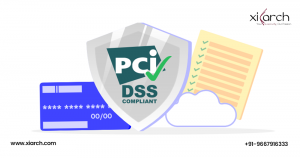Introduction
APIs (Application Programming Interfaces) and web services have become the backbone of modern digital communication. They enable applications to interact and share data seamlessly. However, this convenience also presents security challenges. Unveiling the secrets of API & Web Service Penetration Testing is crucial for safeguarding sensitive information and ensuring the integrity of your digital infrastructure.
In this article, we will explore the intricate world of API and web service penetration testing. From understanding the basics to advanced techniques, we will equip you with the knowledge needed to secure your systems effectively.
1. Understanding API & Web Services
APIs and web services are the bridges that allow different software systems to communicate with each other. Understanding their architecture and functionality is the first step in penetration testing.
When conducting penetration tests, it’s essential to:
- Identify all APIs and web services in use.
- Document their endpoints and functionalities.
- Analyze the data flow between them.
2. Importance of Penetration Testing
Penetration testing is not a luxury but a necessity in today’s digital landscape. It helps organizations:
- Identify vulnerabilities before malicious actors do.
- Ensure compliance with security regulations.
- Enhance the trust of clients and users.
3. Getting Started with API Penetration Testing
Key Steps:
- Scoping: Define the scope of the test, including which APIs will be tested and their functions.
- Information Gathering: Gather information about the APIs, such as documentation and configurations.
- Threat Modeling: Identify potential threats and vulnerabilities.
- Testing: Execute various attack techniques to uncover weaknesses.
- Analysis: Evaluate the results and create a detailed report.
4. Web Service Penetration Testing Techniques
Web service testing involves examining XML, SOAP, and RESTful services. Techniques include:
- XML Injection: Exploiting vulnerabilities in XML parsers.
- SOAP and REST Testing: Assessing security in SOAP and RESTful APIs.
- SQL Injection: Manipulating SQL queries sent to web services.
5. Automated vs. Manual Testing
API and web service penetration testing can be automated or manual. While automated tools provide efficiency, manual testing allows for a more in-depth analysis of vulnerabilities.
6. Security Best Practices
Essential Practices:
- Authentication: Implement strong authentication mechanisms.
- Authorization: Control access to APIs and web services.
- Data Encryption: Encrypt sensitive data during transmission.
- Rate Limiting: Prevent abuse by limiting API requests.
7. Common Vulnerabilities
APIs and web services are susceptible to various vulnerabilities, including:
- Injection Attacks: Such as SQL and XML injections.
- Insecure Authentication: Weak authentication processes.
- Data Exposure: Improper handling of sensitive information.
- Inadequate Rate Limiting: Allowing abuse and DoS attacks.
Unveiling the Secrets of API & Web Service Penetration Testing
8. Frequently Asked Questions (FAQs)
What is API penetration testing? API penetration testing is the process of evaluating the security of an application’s APIs to identify vulnerabilities that could be exploited by malicious actors.
How often should API penetration testing be conducted? API penetration testing should be conducted regularly, ideally after every major update or change to the API and at least annually.
What are the primary goals of web service penetration testing? The primary goals of web service penetration testing are to identify vulnerabilities, assess the security of data transmissions, and ensure compliance with security standards.
What is the role of automation in API penetration testing? Automation in API penetration testing helps detect common vulnerabilities quickly and efficiently, but manual testing is essential for in-depth analysis.
What are some common challenges in API penetration testing? Common challenges include identifying all APIs, dealing with evolving APIs, and ensuring thorough coverage in testing.
What actions should be taken post-penetration testing? After penetration testing, it’s crucial to address identified vulnerabilities promptly and regularly repeat testing to ensure ongoing security.
Conclusion
In the digital age, API and web service penetration testing is indispensable for organizations looking to protect their data and systems from cyber threats. By understanding the secrets and techniques involved, you can fortify your defenses and maintain the trust of your clients and users.
Remember, security is an ongoing process, and regular penetration testing is a vital component of safeguarding your digital assets.



